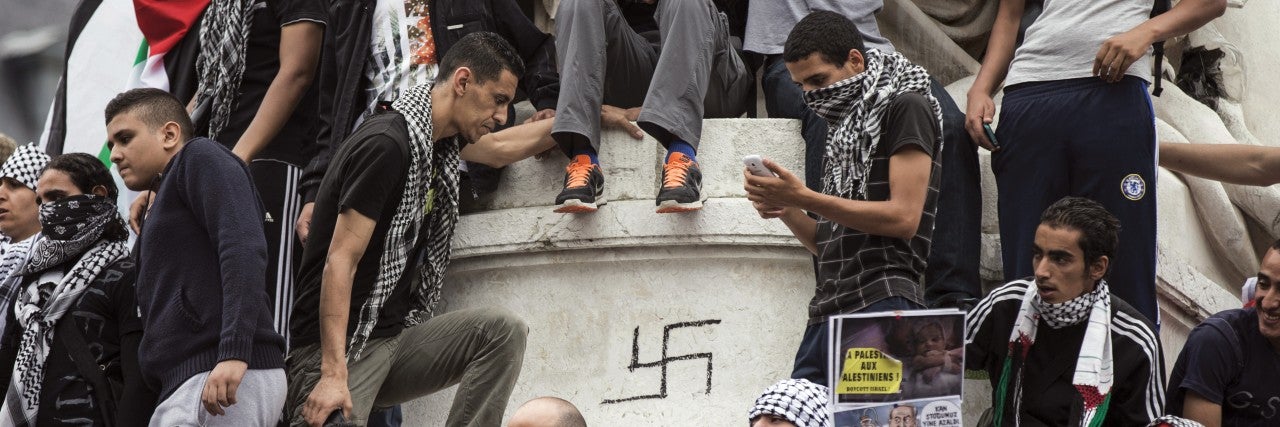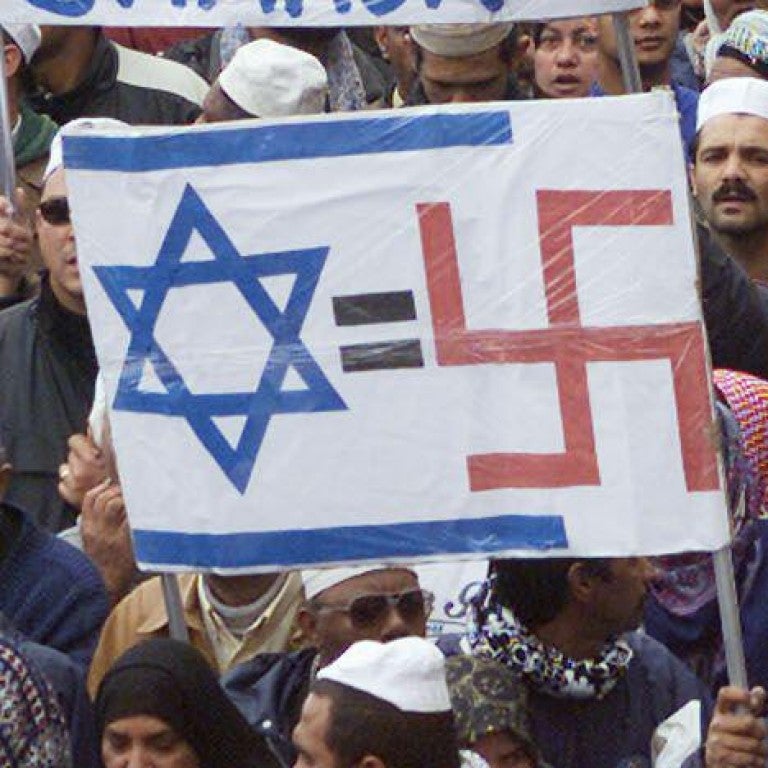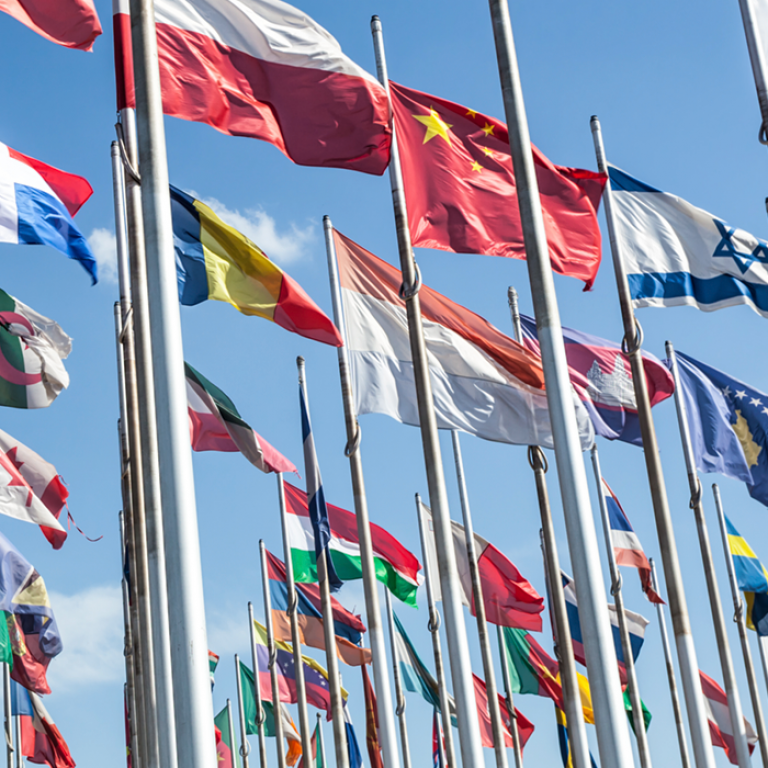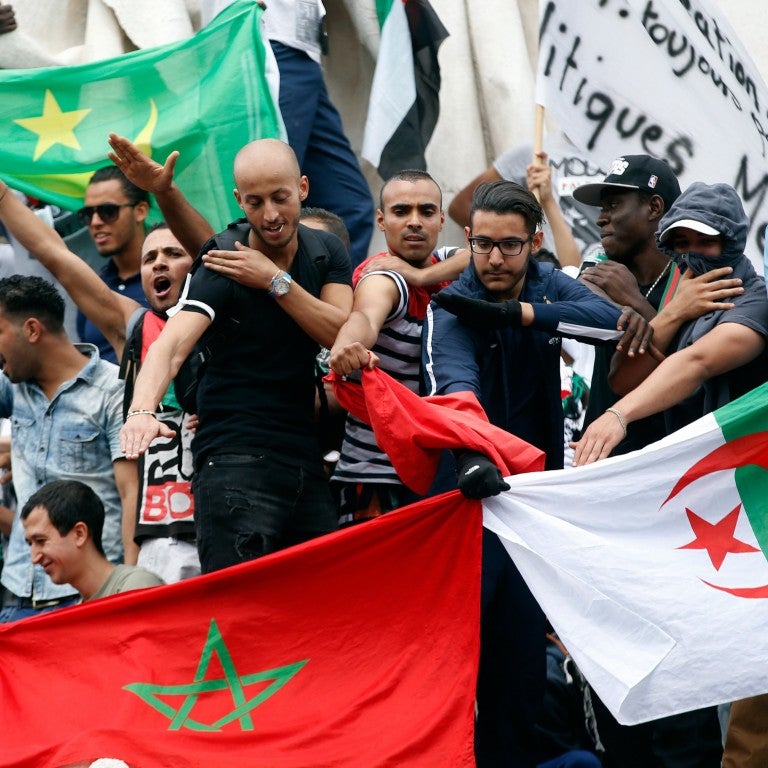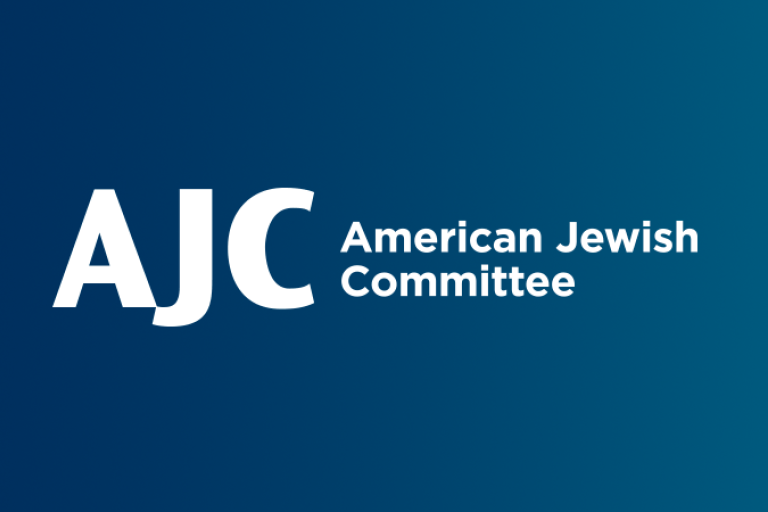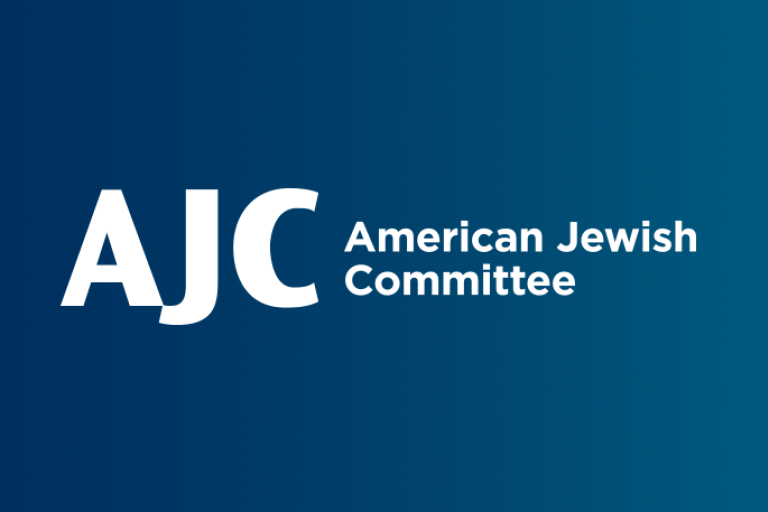September 15, 2021
Pierre-André Taguieff is a French philosopher who specializes in the study of racism and antisemitism. He is the director of research at the French National Centre for Scientific Research in an Institut d'Etudes Politiques de Paris laboratory, the Centre for Political Research (CEVIPOF).
In 2002 Taguieff published The New Judeophobia, the first book published in France to grasp the scope of what happened in Durban. In books such as The New Anti-Jewish Propaganda and more recently, The Decolonial Sham, he has continued to follow the evolution of this “new antisemitism.”
AJC Managing Director of Europe Simone Rodan-Benzaquen recently sat down with Taguieff to discuss the development and impact of the antisemitism that swept Durban.
-
SRB: Twenty years after the first Durban Conference and the September 11th attacks that followed, the work you published at that time is particularly relevant. You were one of the first, between 2000 and 2001, to write about the intellectual and political phenomenon that was to be embodied in the first Durban Conference, only a few days before the attacks on the U.S. What alerted you so early? What were the warning signs?
PAT: During the twenty years preceding the Durban conference and 9/11, I had already done a lot of work on the evolution of antiracism in relation to the development of so-called anti-Zionist propaganda. In 1989, shortly after the First Intifada, I introduced the term "new Judeophobia" to characterize this ideological configuration.
In the left-wing antiracist imagination, the Jews had been transformed from victims of European antisemitism into executioners of the Palestinians, which was now the new derogatory definition created for “Zionist.” By transforming them into "Zionists,” and stigmatizing the designation, the Jews took on the figure of "racists" who oppressed the Palestinians.
In addition, the orchestrated denunciation of the Sabra and Shatila massacre near Beirut in September 1982 (in which a militia tied to the Christian Lebanese right wing party killed hundreds if not thousands of Palestinians and Lebanese Shiites) wrongfully accused the Israeli army, reviving the old accusation of ritual murder. While Lebanese Commander Elie Hobeika's responsibility for the massacre was quickly established, Ariel Sharon was regularly accused of being the "butcher of Sabra and Shatila.”
When in 1983 Syrian General Mustafa Tlass wrote The Matzah of Zion, the Arab answer to The Protocols of the Elders of Zion, the libel accusing Jews of ritual murder caught fire. This disinformation operation represented the first worldwide media victory of "anti-Zionist" propaganda that denounced "Zionists" as criminals. Judged to be accomplices of "Zionists" -- defined as racists, colonialists, oppressors, and criminals -- the Jews thus became enemies to fight, unless, of course, they joined the anti-Zionist camp and became fellow combatants.
The accusation of ritual murder of children arose once again during the campaign that accompanied the beginning of the Second Intifada launched on September 29. The reported death of a young Palestinian boy named Mohammed al-Dura, who was erected as an iconic victim of the Israeli army, garnered extreme media attention. Israel Defense Forces was denounced as a "child-killing" army. Through the image of the child "killed by the Zionists”, I discerned a recurrent anti-Jewish stereotype, the archetype of the homicidal Jew, developed on the basis of two accusations borrowed from Christian anti-Judaism: that of deicide and that of ritual crime.
It was in this convulsive context that I published, in January 2002, The New Judeophobia, a short, updated synthesis of my work on the new forms of Jew hatred. In my subsequent books, Preachers of Hate (2004), The Judeophobia of the Moderns (2008), The New Anti-Jewish Propaganda (2010) and Israel and the Jewish Question (2011), I returned to the consequences of the interminable "al-Dura affair,” which arose from a Palestinian propaganda operation based on a brief and dubious television report. Let us briefly recall the circumstances in which the affair was launched. It all started with a shooting at the Netzarim crossroads (Gaza Strip) on 30 September 2000, showing the young Palestinian Mohammed al-Dura at his father's side, according to images taken by Palestinian cameraman Talal Abu Rahma, aired the same day by the public television channel France 2 during its 8 p.m. news program, and narrated by Franco-Israeli journalist Charles Enderlin. This brief 48-second report seemed to show the death of the child in the arms of his father. Commentators speculated that Israeli soldiers perpetrated the fatal shooting. This is the origin of the rumor that the Israeli army killed "little Mohammed”. Even though the first critical analyses of the images concluded that they were staged as propaganda, that did not stop the rumors spread.
Broadcast in a context where contradictory rumors about the ongoing clashes were multiplying, these images acted as a powerful catalyst for the Second Intifada. The France 2 report fueled the Palestinians' desire for revenge, and of course sharpened the desire of all the "anti-Zionists" to do battle with Israel. Erected as a "martyr" child, "little Mohammed" immediately became the emblematic figure of the al-Aqsa Intifada, and the images presented as those of his "agony" and then his "atrocious death,” attributed to non-accidental Israeli fire, became an "emblem of Israeli sadism.” It can be hypothesized that the anti-Jewish explosion that took place a year later in Durban was instigated by this international campaign against Israel and the "child-killing" Zionists, based on a media scam. (It should be noted that Al Dura’s picture was displayed on t-shirts and posters put up at the UN NGO Forum at Durban and was part of the anti-Israel narrative at Durban I)
-
SRB: In The New Anti-Jewish Propaganda, published in 2010, you write that the year 2001 is not only the year "of the great shift to international terrorism, and of political Islam as a conquering force,” but also the year of "the ideological corruption of anti-racism, the cynical instrumentalization of human rights, and the decline of Western democracies.” If we follow your argument, it was Durban that provided the stage for this shift via a "symbolic pogrom" against Jews, and you give many compelling examples and anecdotes. How do you explain that Jews have been so much the symbol and target of this new anti-Western and anti-democratic hatred? Is the situation in the Middle East, where the Second Intifada had exploded the year before, a sufficient explanation?
PAT: Durban I was a key moment that revealed the perversion of a new form of anti-racism that began immediately after the Six-Day War in June 1967. It manifested itself notably on November 10, 1975, when the UN General Assembly adopted Resolution 3379 condemning "Zionism" as a "form of racism and racial discrimination." It emerged again in the autumn of 2000, when the Second Intifada, sparked a powerful wave of incriminating accusations aimed at Israel and "the Zionists”.
What we discovered with Durban I, this so-called "World Conference against Racism, Racial Discrimination, Xenophobia and Related Intolerance,” was the normalization of a number of extremist, sectarian, and intolerant positions cloaked in grand words and noble intentions. We witnessed the spectacle of a great perversion of the struggles waged in the name of the fight against racism and the defense of human rights, which resulted in the "symbolic pogrom" that I have described. It was now known that the target of pseudo-anti-racists was not just Israelis and "Zionists.” It was Jews.
For example, a leaflet distributed at the World Conference displayed a picture of Adolf Hitler, accompanied by the caption:
' What if I had won? The good things: There would be NO Israel and NO Palestinian's blood shed - the rest is your guess. The bad things: I wouldn't have allowed the making of the new Beetle - the rest is your guess'
What previously had been considered the ravings of fringe extremists was now expressed as a vulgate, legitimized by the so-called "World Conference.”
-
SRB: You write in the same book that a new figure of the Jew as absolute enemy was constructed in Durban. How is this figure new compared to traditional antisemitism?
PAT: This new, inherently negative figure of the Jew was being constructed long before Durban, but it was in Durban that it was recognized and registered as the object of a broad consensus in a certain anti-racist activism.
The "classic" antisemites in modern Europe blamed the Jews for their universalism, their "cosmopolitanism" and their "nomadism,” which made them foreigners everywhere and made them unfit for any kind of national life. At the beginning of La France juive, or Jewish France, an antisemitic tract published by Édouard Drumont in 1886, he stated this axiom: "The fatherland, in the sense that we attach to this word, has no meaning for the Semite. The Jew (...) is inexorably universal.” The irreducible foreignness of the Jews was often explained by their supposed African or Asian racial origins: If the Jews could not be assimilated, it was because they were not of the "white race.” Consequently, they could only settle temporarily as parasites, exploiters, and predators in the European nation-states that took the risk of welcoming them.
At the Durban conference, the main themes of accusations against Jews were of a different order: Jews were accused of being racists, xenophobic nationalists, colonialists, and imperialists, even "fascists" or "Nazis," making them a kind of "white man" or even "super-white man,” inherently fearsome and hateful. In the new anti-Jewish discourse, I have discovered that Jews are no longer Africanized or Asianized: They are Westernized, even "Aryanized.” One of the consequences of this ideological operation is that the Jews, thus "de-Semitized," appear as foreigners to Palestine and can therefore be denounced as intruders, usurpers, occupiers. It is the projection onto the Jews of the hatred and resentment directed at Westerners that seemed to me to constitute the great novelty of the globalized "anti-Zionist" rhetoric. It is not only about "liberating" Palestine from so-called Jewish occupation, but also about "liberating" humankind from Jewish or "Zionist" domination.
By way of example, the precipitous departure of the United States from Afghanistan that transformed into a victory for the Taliban, has been welcomed by all Islamist groups in the world.
On August 16, 2021, Hamas said in a statement, "We congratulate the Muslim Afghan people on the defeat of the U.S. occupation in all Afghan lands." On Twitter, senior Hamas official Moussa Abu Marzouk called the Taliban victory "a lesson for all oppressed people.”
Moreover, the head of the Palestinian Islamist organization, Ismail Haniyeh, reached out to the Taliban’s second in command Mullah Abdul Ghani Baradar,to congratulate him on the "defeat of the U.S. occupation" in Afghanistan, adding this prophecy: "The end of the U.S. occupation of Afghanistan is a prelude to the end of the Israeli occupation of the land of Palestine." This positioned the end of the State of Israel within the course of history, which was imagined as a succession of inevitably victorious liberation movements. This is a sham: Islamist movements embody the very opposite of liberation movements. They are movements of enslavement and alienation of Muslim populations, from which they demand total submission to Sharia law. The big question that remains is that of voluntary submission. What to do when a people consent to its enslavement? In this case, as Westerners have long since learned at their own expense, interventionist paternalism, armed with good intentions, is doomed to failure. One can only bet on the self-emancipation of peoples.
-
SRB: Next week’s commemoration of Durban I should not overshadow its sequel, Durban II, which was held in April 2009. Libya had taken over the presidency of the conference in 2007, Pakistan sat as the spokesperson for the OIC and Iran held the vice presidency. But it was Ahmadinejad who played the starring role in this second episode, which aimed to "clarify the achievements" of Durban I. Wasn't it during this second episode that the accusations of racism against Israel were joined for the first time by the notion of "defamation of religions,” whereby emphasis was placed on Islamophobia as the primary racism? Where did this idea come from that criticizing or not liking a religion is a form of racism, and what role did Ahmadinejad play in reformulating it at Durban II?
PAT: At the end of February 2009, the draft outcome document for the follow-up conference included five paragraphs that accused Israel of racism and of pursuing an apartheid-like racist policy toward the Palestinians. Indeed, the former Organization of the Islamic Conference (OIC) wanted the drafts, which were deemed unacceptable by European countries, to include the theme of "defamation of religions,” in addition to a brutal indictment of Israel. This was followed by the notion of "negative stereotyping of religions," in order to prohibit any criticism of Islam, criminalized under the name of "Islamophobia."
The day before his speech at the UN in Geneva, Mahmoud Ahmadinejad declared on Iranian television that "the Zionist ideology and regime are the flag bearers of racism,” adding that the Zionists "plunder the wealth of nations by controlling the centers of power in the world", and that they "have created conditions so that nothing can be said about this evil phenomenon, whose effects impact the inhabitants of nations”.
It is worth noting the use of the term "global Zionism" or "world Zionism" which is often used in so-called "anti-globalist" conspiracy literature. The term suggests that Zionism is not the liberation movement of the Jewish people, but a global conspiracy that pretends Jews are the masters of the world. We know that this is the conspiracy fantasy of which the famous forgery titled Protocols of the Elders of Zion was the most powerful vector in the 20th century.
In his speech on April 20 in Geneva, the opening day of Durban II - which coincided with the annual Holocaust Remembrance Day - Ahmadinejad accused Israel of being the "cruelest and most racist regime,” before offering this revisionist history lesson: "To compensate for the consequences of racism in Europe, even harsher racists (than the Nazis) were brought to Palestine to rule.” He condemned "world Zionism, which epitomizes racism.” In the final declaration of Durban II, the following manifestations of "violence and religious or racial intolerance" are listed and equated: "Islamophobia, antisemitism, Christianophobia and anti-Arabism.” They are said to operate "in particular through the negative stereotyping and stigmatization of persons on the basis of their religion or beliefs.” The speech of the Iranian president, much applauded by non-European countries, revealed a clear strategy. It was a way to reintroduce the notion of "defamation of religions" through the window, after having driven it out through the front door.
-
SRB: The repercussions of Durban I and II are global, but haven’t they had the deadliest consequences in France, with the propaganda of antisemitic “comedian” Dieudonné and far-right antisemite Alain Soral, financed by Iran in 2009? Can it be said that this propaganda led to the murders of three Jewish school children and a father in Toulouse by a jihadist?
PAT: Four myths have made Jews the figure of the absolute enemy:
- Israel is a racist, imperialist, and colonialist state
- "Zionists" are racist and, more particularly, Islamophobic
- Jews are "Zionists" until proven otherwise
- Westerners, led by Jews and/or "Zionists", are Islamophobic. In these statements, let us emphasize, the word "Zionist" constitutes a mode of demonization and criminalization.
The practical conclusion for jihadists is self-evident: For anyone who has internalized this view, killing Jews is killing Israelis or "Zionists" everywhere in the world, which is an act of self-defense or legitimate revenge.
With the development of the Internet between the mid-1990s and the end of the 2000s, there was a great transformation of propaganda discourse, structured by themes of accusations aimed at Jews. From that point on, the producers, entrepreneurs, and propagators of the globalized anti-Jewish discourse have formed three groups, which are relatively distinct, but by no means self-contained: the diverse far right, the anti-capitalist extreme left and the nebulous grouping of Islamists (Muslim Brotherhood, Salafists, jihadists).
Within the extreme right, a distinction must be made between the neo-Nazis, who profess anti-Jewish racism, and the xenophobic nationalists, who defend state antisemitism; both are given to conspiracy theories. Bridges are built between certain extreme right-wing movements and certain currents of Islamism, their common enemy being a fantasized "world Zionism.” The site of Alain Soral's association Égalité et reconciliation offers a striking illustration.
Convergences or alliances can also be observed between extreme left-wing and Islamist circles. The Islamo-leftists of the Parti des Indigènes de la République, a postcolonialist movement that has been accused numerous times of being antisemitic, bear witness to this. If the myth of the "world Zionist conspiracy" is the belief most shared by the three main anti-Jewish forces, Holocaust revisionism plays a parallel role as a banner and a rallying point for most Judeophobic currents.
Jihadists like Mohamed Merah, the gunman who in March 2012 killed seven people in France, including three children in Toulouse, and Amedy Coulibaly, the gunman who in January 2015 killed four people in the Hypercacher Kosher Supermarket siege in Paris, were fed this propaganda. Jewish or not, members of the editorial staff of Charlie Hebdo, executed on January 7, 2015 by the Kouachi brothers, were considered "Islamophobic." These killings show that, for radical Islamists, there are two deadly sins: being Jewish and being "Islamophobic.” Two sufficient reasons to deserve death. In this regard, those on the left who had previously accused and targeted Charlie Hebdo for being Islamophobic joined their voices to those of the Islamists to designate targets and incite the massacre.
It should be noted that in coldly murdering Jewish children, Mohamed Merah declared that he wanted to "avenge Palestinian children.” During the trial of Merah's brother, which opened in Toulouse in October 2017, the president of the court read this passage from the investigation:
"After the occurrences, the atmosphere changed in the Izards neighborhood. The young people continue to traffic, but now, they go to the mosque and say that they must kill Jews."
As so-called heroes or martyrs, Merah and Coulibaly, who also claimed to kill Jews to avenge “oppressed Muslims,” have become examples for some young Muslims.
Since the Second Intifada and Durban I, the history of a sinister alliance has been written: that of jihadism and a certain political left. To summarize: The unconditional commitment to the "Palestinian cause" has been, since the 1970s, the main driving force behind the hatred of Jews, its reformulations, its globalization, it’s also been the strongest motivation for the jihadists who take action.
-
SRB: Perhaps one of the most significant and perhaps strangest features of Durban I and II is what happened to the political language. In both Durban I and II, the Western delegations "cleaned up" the final resolutions adopted by the assembly, so that the conferences appeared to be virtuous to the general public. This is particularly the case with Durban II, whose outcome delighted even then-French Foreign Minister Bernard Kouchner. For him, the adoption of the final resolution marked "the failure of all those who tried to instrumentalize the conference.” But didn't the final resolution ultimately serve to mask what was really said in Durban rather than combat it? Isn't there a lot of naivete on the part of Western democracies in this respect?
PAT: It is obvious that the function of these "final resolutions" was to conceal the sad reality of the anti-Jewish furor that manifested itself in Durban I and II. As if by magic, they erased the points of contention. They hid the anti-Jewish dust under the carpet of "political correctness" and good intentions. The leaders of Western democracies, when their expectations are disappointed, still want to believe what seems desirable or preferable to them, regardless of the harsh reality. They tend to mistake their dreams for reality, because of the historical optimism that underlies and moves the regimes of freedom invented by modern Westerners. This exposes them to being regularly deceived by cynical and clever dictators who know how to give the impression that they have mellowed and are willing to respect agreements, or even that they have rallied, at least in part, to democratic values and standards. How can we not recall the Munich Agreement, which was signed in September 1938 to "avoid war" and ended in the defeat of the democracies?
The neo-Munich spirit is not a thing of the past. Faced with fanatics, Western political leaders still want to believe in the virtues of dialogue and negotiation. They are particularly sensitive to the slightest hint of "openness" or "change" among cunning fanatics who know their weaknesses perfectly well. They speak of freedom, equality, diversity, and inclusiveness to fanatical warriors who hate and despise them.
What I have learned from these World Conferences on and against Racism is, firstly, that they have legitimized the pseudo-antiracism that posits Islamophobia (in the sense of criticizing the religion) as the ultimate racism and encourages the criminalization of Israel and Zionism. Secondly, they have demonstrated an insurmountable conflict between two visions of anti-racism. On the one hand, there is the universalist and democratic anti-racism. In principle, this anti-racism defends freedom of expression and freedom of thought. On the other hand, there is non-democratic or explicitly anti-democratic antiracism. This anti-racism is defined by its anti-universalism, its anti-Westernism and its "anti-Zionism.” The "respect" of cultures or religions (in particular Islam) is thus absolutized, without concern for infringements on the principles of freedom of expression or of freedom of thought, which implies subjecting any dogma to a critical examination.
-
SRB: In Durban, the focus on the question of Zionism allowed the definition of the fight against racism, as it had been defined after the war in the Universal Declaration of Human Rights, to be completely transformed into an identity-based struggle in defense of religions. Can we see in this mutation the origin of the new ideologies that structure the extreme left today, racialism and intersectionality in France, Critical Race Theory and other postcolonial theories in the US and in Great Britain?
PAT: By defining racism as universalism or a form of universalism, the Marxist intellectuals of the 1980s, especially in France, had opened the way. Following the proponents of "theoretical antihumanism" of the 1960s and 1970s - during which structuralists and poststructuralists sang the "death of man" - they saw humanism or universalism as a theoretical translation of the universal scale of values proper to the modern West, which the latter claimed to impose on all peoples. They saw in it only the expression of an ethnocentrism or, more precisely, of a Western racism. They thus deprived antiracism of its universalist foundations and horizons, while reducing "human rights" to a deceptive rhetoric in the service of Western imperialism. The new anti-racism that has emerged from this de-universalization of the foundations and ends of the antiracist struggle claims to fight two main enemies: on the one hand, imperialism and neo-colonialism claiming to have "universal values,” and on the other hand, Western nationalisms. At the same time, the new anti-racists support non-Western nationalisms, hailed as liberation movements, and all forms of mobilizations or identity politics within Western nation-states.
Decolonial ideologues who preach intersectionality, the "systemic racism" model, Critical Race Theory, and "woke" culture and Islamo-leftists claim to fight against the "systemic racism" that supposedly structures Western societies, still called "white”. It follows that this form of antiracism is reduced to the project of destroying Western societies accused of being intrinsically racist. The designated enemies are thus the West and Westernized societies. The "fight against racism" is transformed into a fight against "systemic racism" or against all so-called "systemic" discrimination (of race, gender, religion, etc.).
In this new antiracist worldview, "systemic racism" is purportedly manifested in the societal racism and "state racism" that characterize Western societies. But they do not stop there. In France in particular, their fundamental thesis is that "state racism" is above all "state Islamophobia.” From that point on, the fight against racism tends to be reduced to the fight against Islamophobia and "Zionism.” There is an alignment with Islamist propaganda. The Islamo-leftism of the years 1990-2005 was above all anti-capitalist and anti-imperialist, in the Third Worldist tradition; Islamo-decolonialism is above all anti-Western and anti-white, its so-called "antiracism" being reduced to anti-white racism.
It is in this new ideological configuration that "woke" activism (implying a state of being constantly "alert" to "offensive words") and "cancel culture" (the culture of cancellation or banning personalities or works judged to be politically incorrect) are developing today in France and Great Britain on the model of the United States and Canada. These activists normalize a hyper-moralism and a pseudo-antiracist puritanism that works toward the destruction of our history and our high culture, as well as the disappearance of academic freedom and freedom of expression in universities, and more broadly in the intellectual field.
-
SRB: We are currently seeing a resurgence of antisemitic tendencies in the populist movement of the Yellow Vests and in that of the anti-health pass/anti-vaxxers, in particular the Yellow Star, which we have seen among the demonstrators against Islamophobia and today among the anti-vaxxers. Both cases go hand in hand with the idea that the Jews control everything. How do you analyze this convergence between the "new Judeophobia" and the return of traditional antisemitism?
PAT: The instrumentalizations and reversals of victimhood postures, signs, and slogans are part of what I call the ideological corruption of anti-racism. The figure of the persecuted Jew remains the paradigm of persecuted humanity. All those who, in an ideological and cultural war, categorize themselves as victims are inclined to denounce their enemies as "Nazis" and compare themselves to "Jews."
In all my work since the 1980s, my working hypothesis has been that the emergence of new rhetorical forms of Jew-hatred does not imply the disappearance of old ones. Among the new anti-Jewish motifs, some fit into the old ones or inspire slogans. This is the case for the accusation of "racism" aimed at the Jews: Marginal during the 1930s (In the writings of French author Céline, for example), it has become central to contemporary "anti-Zionist" propaganda.
In contemporary so-called populist or "anti-system" movements, many of the slogans are antisemitic, reiterating the themes of the rich, powerful, and manipulative Jew, whose political provenance is indeterminate, oscillating between the nationalist far right and the radical anti-capitalist left. In the anti-health pass/anti-vax demonstrations, one sees signs of the two great traditional anti-Jewish myths:
- The conspiracy myth of the "Jews as masters of the world" establishing a "health dictatorship”
- The myth of the criminal and poisoner Jew, who uses the vaccine as a lethal weapon or works to justify mass vaccination with genocidal motivations.
To be sure, there are intersections between the old antisemitism and the new anti-Zionist propaganda. But as long as the invisible hand of Israel or of "global Zionism" is not explicitly implicated by "anti-system" populists from the left or the right, their rhetoric remains distinct from that of the "anti-Zionist" Islamo-leftists, Islamophiles and "Islamismophiles.” This is why I do not see a global convergence, but rather interferences or intersections between the manifestations of the "new Judeophobia" and the updated bits of traditional antisemitism. The cyclical resurgences of the old antisemitism should not mask the the fundamental trend over the past decades: the radicalization and globalization of the "anti-Zionist" demonology.
